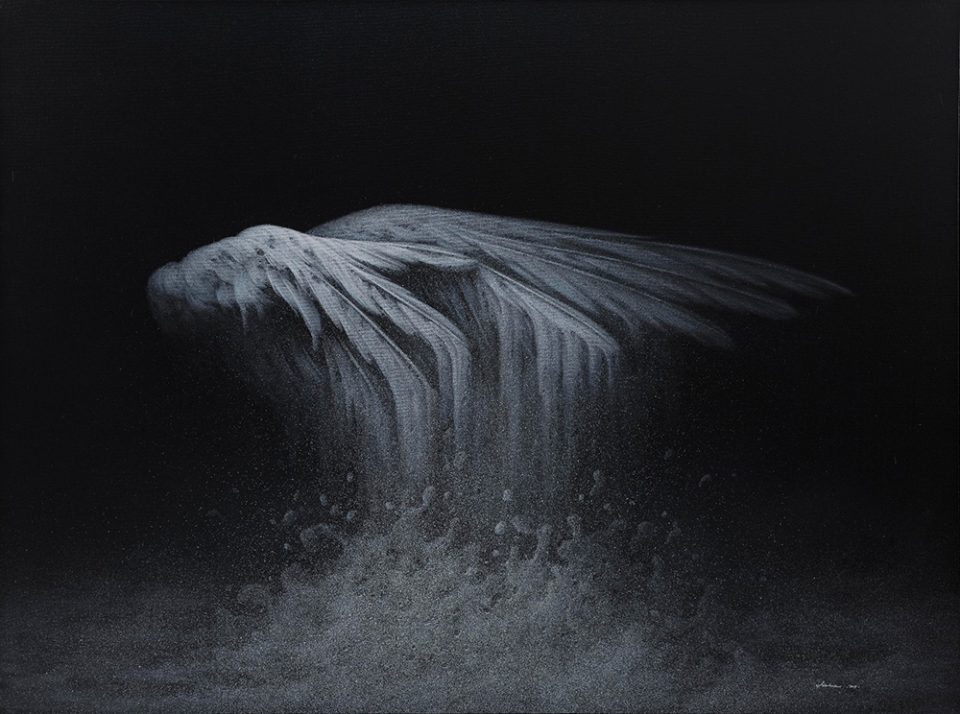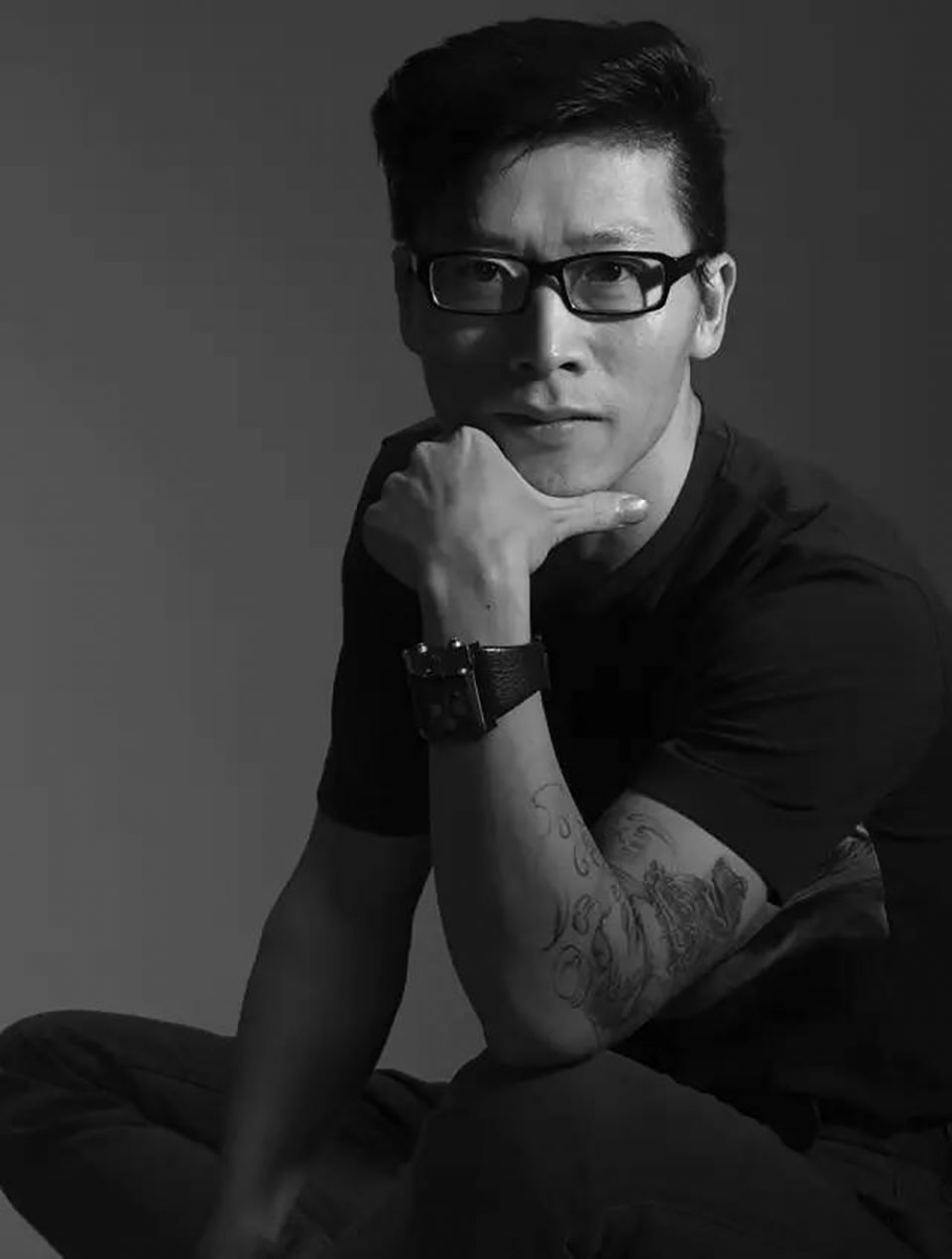
Liu Jiahua was born in Sichuan in 1979, and graduated at the Sichuan Academy of Fine Arts. He came to Beijing in 2009 to work as an independent artist. Thanks to his work, he’s been invited to participate in important exhibitions is his country but also abroad and has won different awards. Recently, Liu Jiahua has attracted a lot of attention among the new generation of artists with his unique form of picture expression.
As an artist who enters the city from the countryside, the order, rules and even civilization of the city undoubtedly subvert the existing cognition of Liu Jiahua. In the visual, psychological and lifestyle aspects, and so, he truly feels the impact of the so-called urbanization process.

Therefore, in the works of his artistic creation, “Returning to Peach Blossoms”, the architectural symbols representing the urban civilization and the traffic symbols and the nature with its mountains and rivers, both have a yearning for urban civilization and a decadent agriculture. “The Return to Peach Blossoms” has a metaphor of “spiritual utopia” from the subject.
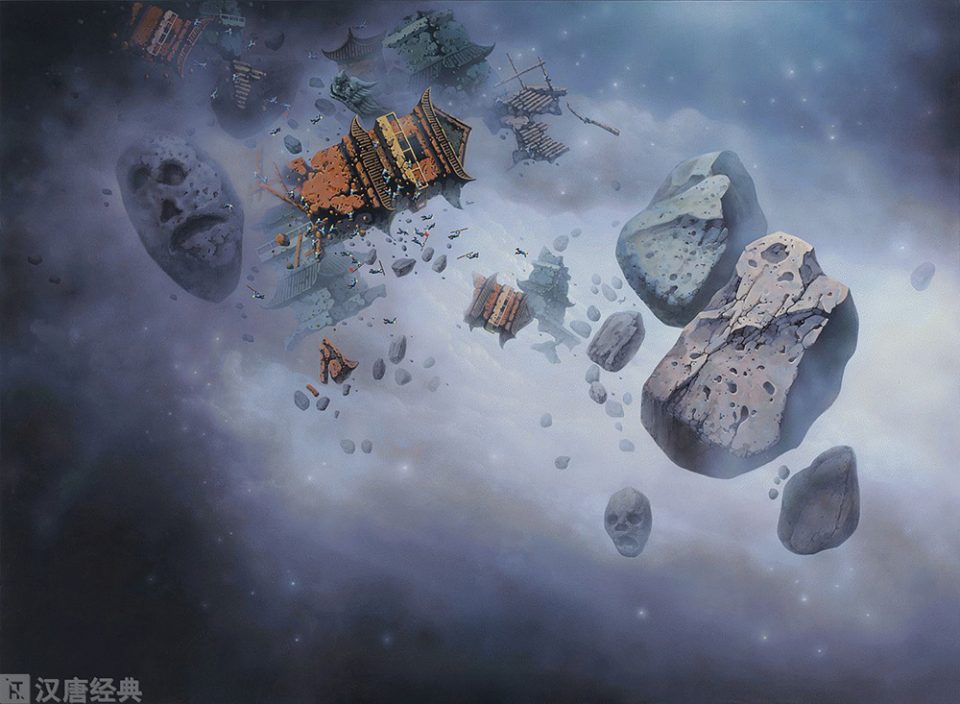
“Building” is more than a “City”. “City” is like a book, a testimony to the modern historical process. Gorgeous skin of human civilization, and a legend and dream in the memory of the nation. The confession of “City” reflects the distress of people, although one is material and the other is flesh. To describe “city” between affirmation and loss is to describe “people” themselves.” ——Liu Jiahua

There’s a proverb talking about winds: it is says that the distance between the two places is one hundred miles. For example, the “wind” will be different, and the “vulgar” will change with a thousand miles.

The artist Liu Jiahua’s work “Red City” was born like a juxtapose of traditional symbols and contemporary phenomena. Causing visual confusion. This surrealistic theme and the sense of suspension of dreamy colors create a lost world that is also true and illusory.

The work “Red City” has a long history and a splendid Chinese culture, and it has been draped in the era of the colorful clouds. The collection of ancient and modern Chinese and foreign architectural creations is infiltrated into the works. Consequently allowing it to be distributed spirituality and vitality.

“Why did you choose ancient architecture?”
At his question Liu Jiahua said: “The pavilion” has a double dimension of meaning, which can represent the ancient architecture that has disappeared, or it can be transformed into a symbol that of traditional and cultural heritage.”
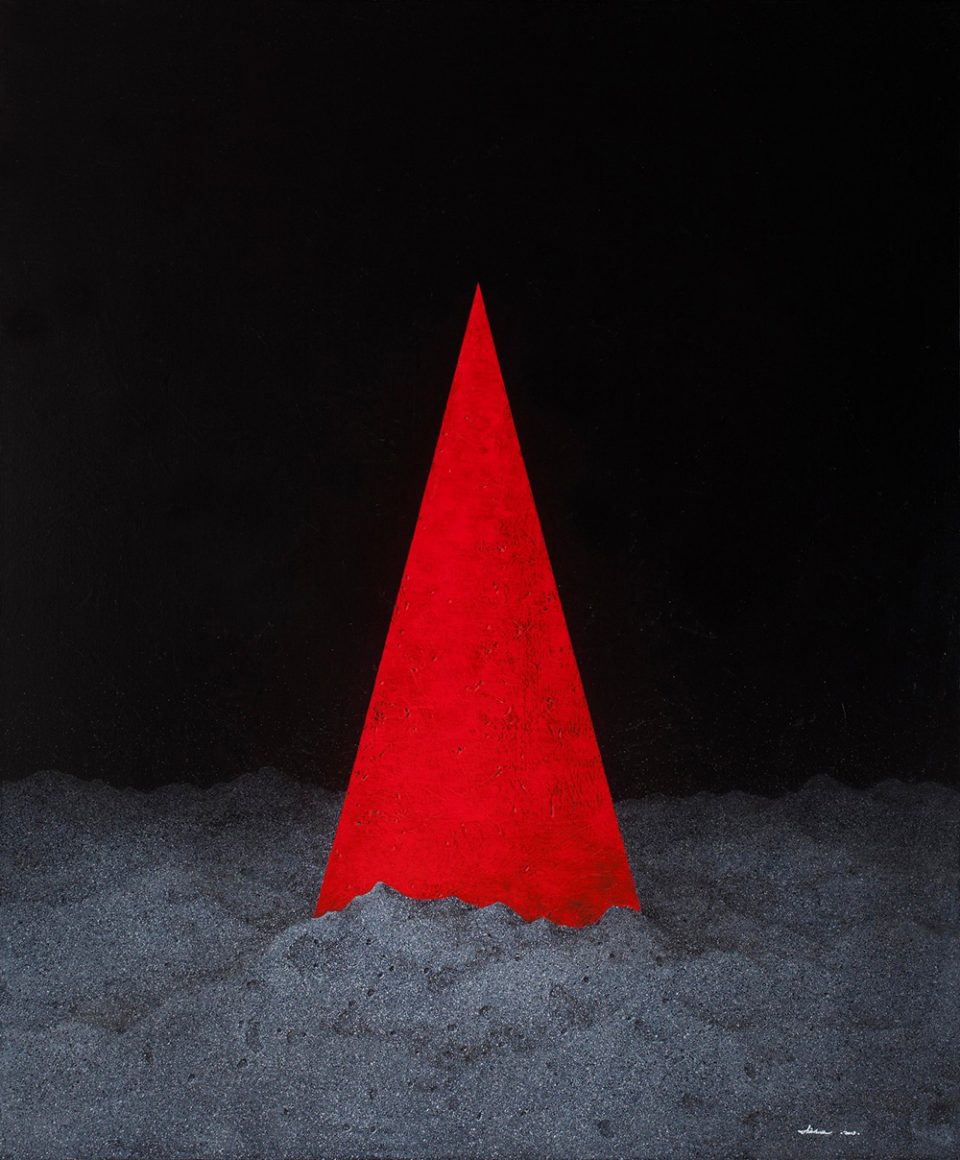
“Next, the red rope began to appear in his picture. Why did you draw this rope?”
Liu Jiahua explained: “It is actually a disbanded Chinese knot. It no longer has the original meaning of harmony, happiness, etc. It is used to bind, Wrapping and hanging Chinese ancient buildings.
Therefore I hoped to use two traditional things to create a current visual experience and social problems. A little bit of “cooking beans and burning soybean meal”.
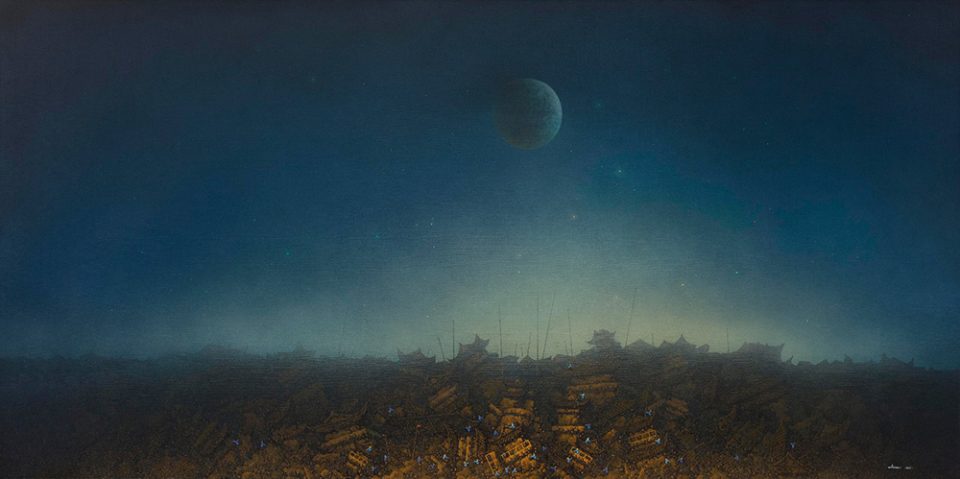
Most of the works created by artist Liu Jiahua are the series of “Red City Records”. So some critics have divided his creation into four periods: the “New City Period”. Which is the period in which Liu Jiahua began to re-examine, recognize,establish and construct himself. At this time, Liu Jiahua was in self-deconstruction and negation of self. Looking for the development period of the true self; the third period was the “Behind the City”. And the ancient architecture depicted in his paintings has begun to transform into the expression of self-centered orientation. The last period is the “unmanned period” is a period of psychological and ideological maturity created by Liu Jiahua. That is to say that it seems to have entered the realm of “no self”.
